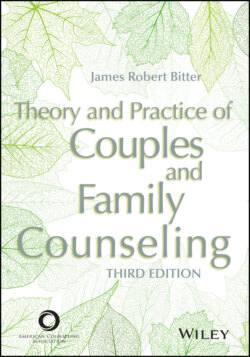Читать книгу Theory and Practice of Couples and Family Counseling - James Robert Bitter - Страница 64
Summary
ОглавлениеI sometimes worry that those histories that people have not lived or been connected to in their own lives will simply be dismissed or will go by them like the wind. This history is long, and still it is meaningful to me, because I have met and known many of the people in this professional genogram. Some of these people granted me the privilege of spending a significant amount of time in their company. Some I merely met at conferences or watched while they did demonstrations of their work. Your own exposure to their work may only come through videotape or digital media. Still, I hope that you will seek out the chance to see both the historical figures and those who currently keep our field moving forward.
In this chapter, we have looked at the stories that go with the four genograms of couples and family counseling. That is how genograms should be used: They are a map and a vehicle for telling the stories of significance for the people represented on the map. And even though most genograms appear to be structural in nature, in some cases completed drawings can invoke a genuine emotional response in the people represented in them. When I look at my own map, I am often caught up in the memories of my life with my mother and father and how soon they were both gone from my life. I can start crying just by looking at the map. I did not expect a similar response to the genograms of couples and family counseling, but when I focus on the parts of the map that represent now deceased Adlerian colleagues, or I remember my experiences with Virginia Satir, or the last training I had with Michael White, tears flow once again. These are not all tears of grief: In many ways, they are tears of recognition of the many ways great teachers and friends have blessed my life.
